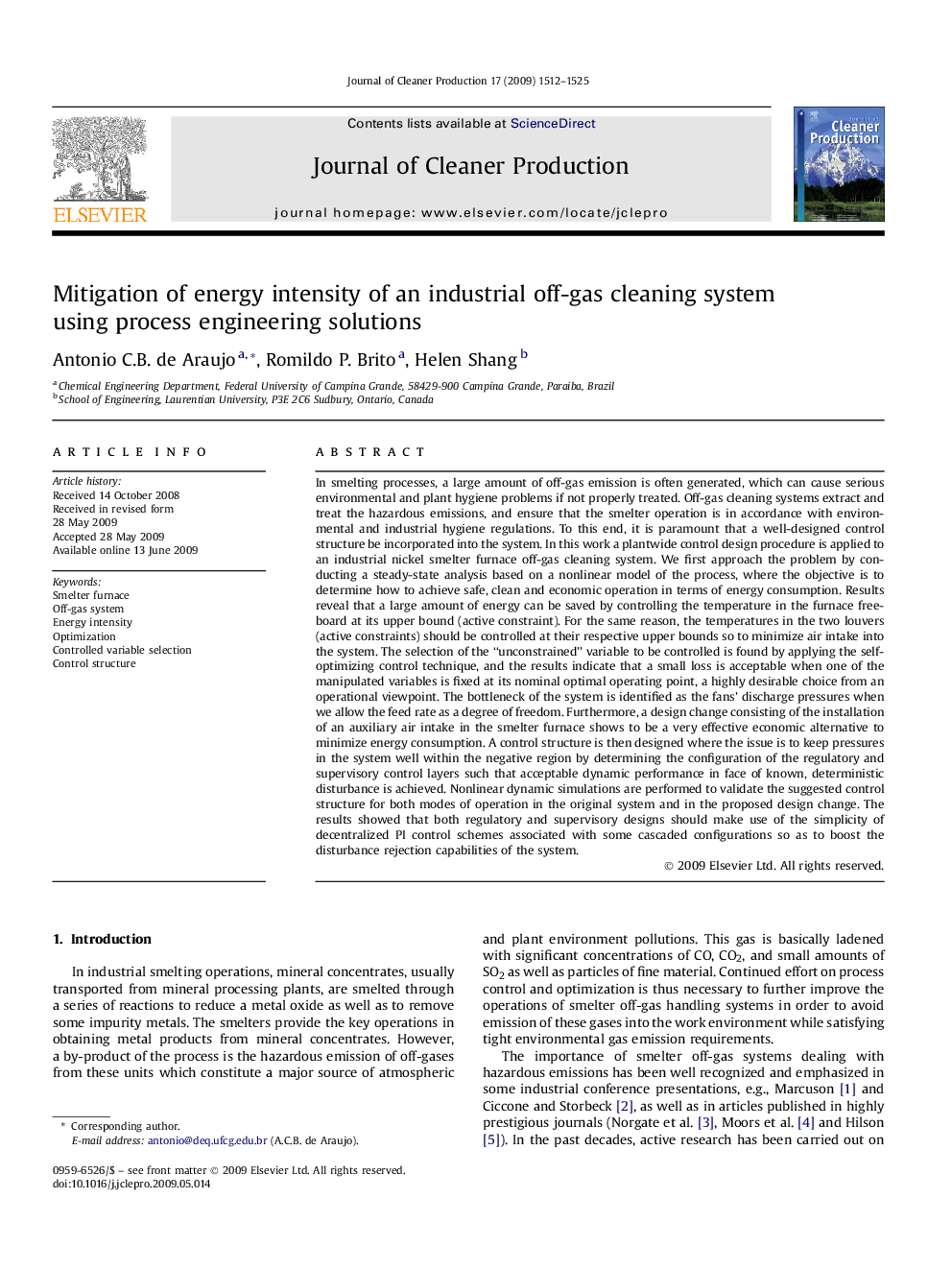| کد مقاله | کد نشریه | سال انتشار | مقاله انگلیسی | نسخه تمام متن |
|---|---|---|---|---|
| 1746291 | 1018088 | 2009 | 14 صفحه PDF | دانلود رایگان |
عنوان انگلیسی مقاله ISI
Mitigation of energy intensity of an industrial off-gas cleaning system using process engineering solutions
دانلود مقاله + سفارش ترجمه
دانلود مقاله ISI انگلیسی
رایگان برای ایرانیان
موضوعات مرتبط
مهندسی و علوم پایه
مهندسی انرژی
انرژی های تجدید پذیر، توسعه پایدار و محیط زیست
پیش نمایش صفحه اول مقاله

چکیده انگلیسی
In smelting processes, a large amount of off-gas emission is often generated, which can cause serious environmental and plant hygiene problems if not properly treated. Off-gas cleaning systems extract and treat the hazardous emissions, and ensure that the smelter operation is in accordance with environmental and industrial hygiene regulations. To this end, it is paramount that a well-designed control structure be incorporated into the system. In this work a plantwide control design procedure is applied to an industrial nickel smelter furnace off-gas cleaning system. We first approach the problem by conducting a steady-state analysis based on a nonlinear model of the process, where the objective is to determine how to achieve safe, clean and economic operation in terms of energy consumption. Results reveal that a large amount of energy can be saved by controlling the temperature in the furnace freeboard at its upper bound (active constraint). For the same reason, the temperatures in the two louvers (active constraints) should be controlled at their respective upper bounds so to minimize air intake into the system. The selection of the “unconstrained” variable to be controlled is found by applying the self-optimizing control technique, and the results indicate that a small loss is acceptable when one of the manipulated variables is fixed at its nominal optimal operating point, a highly desirable choice from an operational viewpoint. The bottleneck of the system is identified as the fans' discharge pressures when we allow the feed rate as a degree of freedom. Furthermore, a design change consisting of the installation of an auxiliary air intake in the smelter furnace shows to be a very effective economic alternative to minimize energy consumption. A control structure is then designed where the issue is to keep pressures in the system well within the negative region by determining the configuration of the regulatory and supervisory control layers such that acceptable dynamic performance in face of known, deterministic disturbance is achieved. Nonlinear dynamic simulations are performed to validate the suggested control structure for both modes of operation in the original system and in the proposed design change. The results showed that both regulatory and supervisory designs should make use of the simplicity of decentralized PI control schemes associated with some cascaded configurations so as to boost the disturbance rejection capabilities of the system.
ناشر
Database: Elsevier - ScienceDirect (ساینس دایرکت)
Journal: Journal of Cleaner Production - Volume 17, Issue 16, November 2009, Pages 1512-1525
Journal: Journal of Cleaner Production - Volume 17, Issue 16, November 2009, Pages 1512-1525
نویسندگان
Antonio C.B. de Araujo, Romildo P. Brito, Helen Shang,